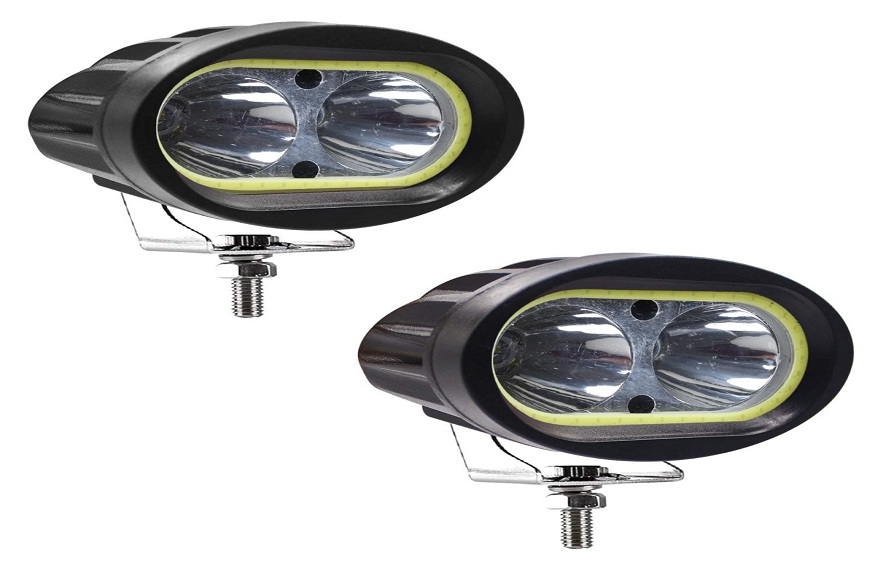Fog lights are usually those low-slung beams of light that pierce through the murky veil of fog, heavy rain, or swirling snow.They are more than just an aesthetic addition to a vehicle; they are a crucial safety feature designed to enhance visibility in adverse weather conditions. However, not all auxiliary lights qualify as legitimate Dot Approved Fog Lights – Rigid Light Shop, and understanding the regulations surrounding their approval and usage is paramount for both safety and legal compliance.
The Purpose of Fog Lights: Seeing Through the Obscurity
Unlike headlights, which are positioned higher and designed for long-range illumination, fog lights are mounted low to the ground. This strategic placement is key to their effectiveness. Fog and other forms of precipitation tend to hover above the road surface. By projecting a wide, flat beam of light close to the ground, fog lights aim to illuminate the road surface and the edges of the lane, reducing glare from the fog itself and improving the driver’s ability to see the road markings and potential hazards.
The light emitted by approved fog lights is typically amber or selective yellow. This is not merely a stylistic choice. These colors have shorter wavelengths compared to white light, which means they are less likely to be reflected back by the water droplets or snowflakes in the air, thus minimizing the “whiteout” effect that can occur when using standard headlights in foggy conditions.
The Anatomy of Approved Fog Lights: Design and Standards
For a fog light to be legally approved, it must adhere to specific design and performance standards set by regulatory bodies worldwide. These standards ensure that the lights function effectively without causing glare to other drivers. Key aspects of these standards include:
- Light Intensity and Distribution: Approved fog lights must emit a beam of sufficient intensity to illuminate the immediate road ahead and to the sides, but not so powerful as to cause discomfort or glare to oncoming traffic. The beam pattern is typically wide and flat with a sharp horizontal cutoff to prevent upward light scatter.
- Color: As mentioned earlier, approved fog lights often emit an amber or selective yellow light. While some regulations may permit white light, it must still meet specific intensity and beam pattern requirements to avoid being confused with or causing glare like standard headlights.
- Markings and Certification: Approved fog lights will typically bear specific markings or certifications indicating compliance with relevant standards. These markings might include an “E” mark followed by a number indicating the country of approval (common in Europe under ECE regulations) or a “DOT” marking (Department of Transportation) in the United States.
- Installation Requirements: Regulations also often dictate how and where fog lights can be installed on a vehicle. This includes the height above the ground, the distance from the vehicle’s centerline, and sometimes restrictions on the number of fog lights that can be fitted. These guidelines are in place to ensure optimal performance and minimize the risk of confusion with other vehicle lights.
The Importance of Using Approved Fog Lights Responsibly
Having approved fog lights installed on your vehicle is only half the equation. Using them responsibly is equally important for safety and legal compliance. Key guidelines for responsible for light usage include:
- Use Only When Necessary: Fog lights are designed for use in conditions of poor visibility such as fog, heavy rain, or snow.Using them in clear weather can be distracting to other drivers and may even be illegal in some jurisdictions.
- Switch Off When Visibility Improves: As soon as the fog or other adverse conditions dissipate and visibility improves fog lights should be switched off. Continuing to use them can create unnecessary glare.
- Front vs. Rear Fog Lights: Many vehicles are equipped with both front and rear fog lights. Rear fog lights are typically much brighter and are intended to make your vehicle more visible from behind in dense fog. However, they should be used sparingly as their intensity can be dazzling in less severe conditions. Always check your local regulations regarding the use of rear fog lights.
- Never as a Substitute for Headlights: Fog lights are not intended to replace headlights in normal driving conditions. Headlights provide the necessary long-range illumination for safe driving at regular speeds.
Conclusion
Approved fog lights are a vital safety feature that can significantly enhance visibility in challenging weather conditions. Understanding the regulations surrounding their design, approval, and usage is crucial for every driver. By ensuring that your vehicle is equipped with approved fog lights and using them responsibly, you contribute to your own safety and the safety of all road users.

